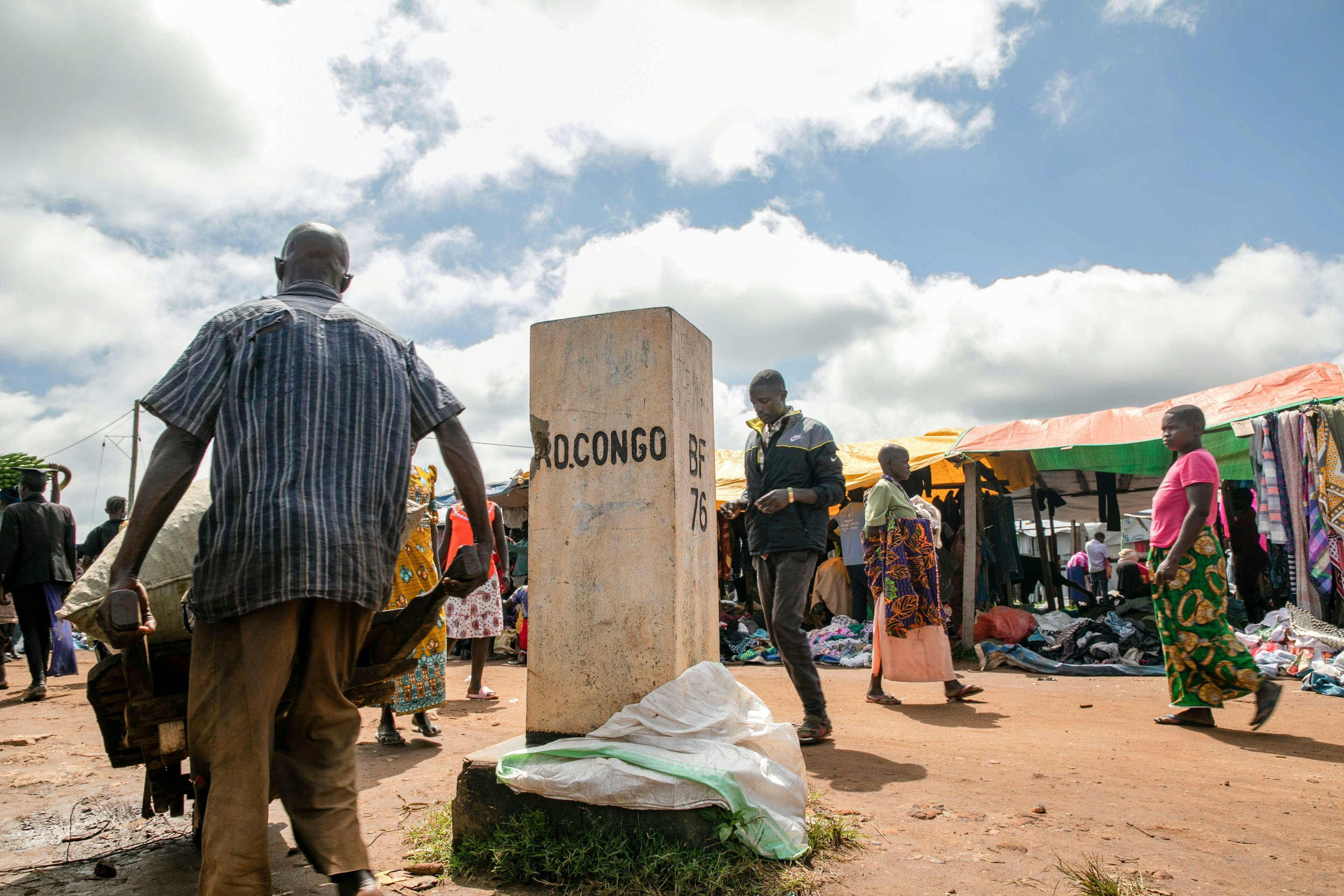Voices from thefrontlines
Climate change is reshaping our world and exposing Africans, across the continent, to increased hardship. How can its people be empowered to face climate shocks and stressors and make informed decisions to move or stay now and in the future?
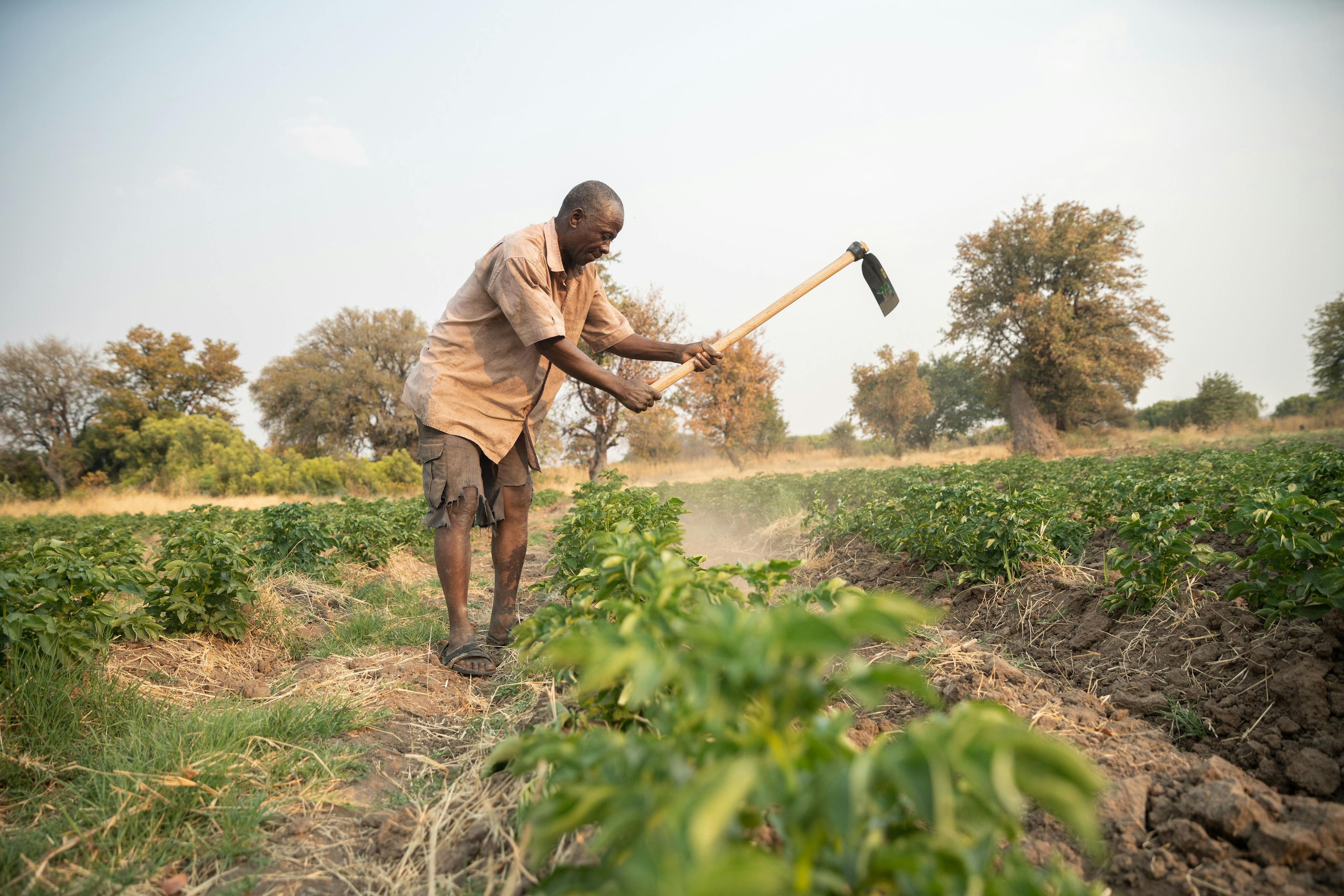
Big changes • 3.1
Land &Water
Land &Water
The big drivers of population shifts
Introduction
Agriculture is at the heart of African life and its economies. Climate impacts especially on rain-fed farming and crop yields will redraw the continent’s population footprint.
While currently affected by severe droughts, river floods upstream from Humbe (Angola) are expected to drive 153 thousand people to move away by 2050. This movement will continue a generalized pattern of people moving towards irrigated lands within African countries.
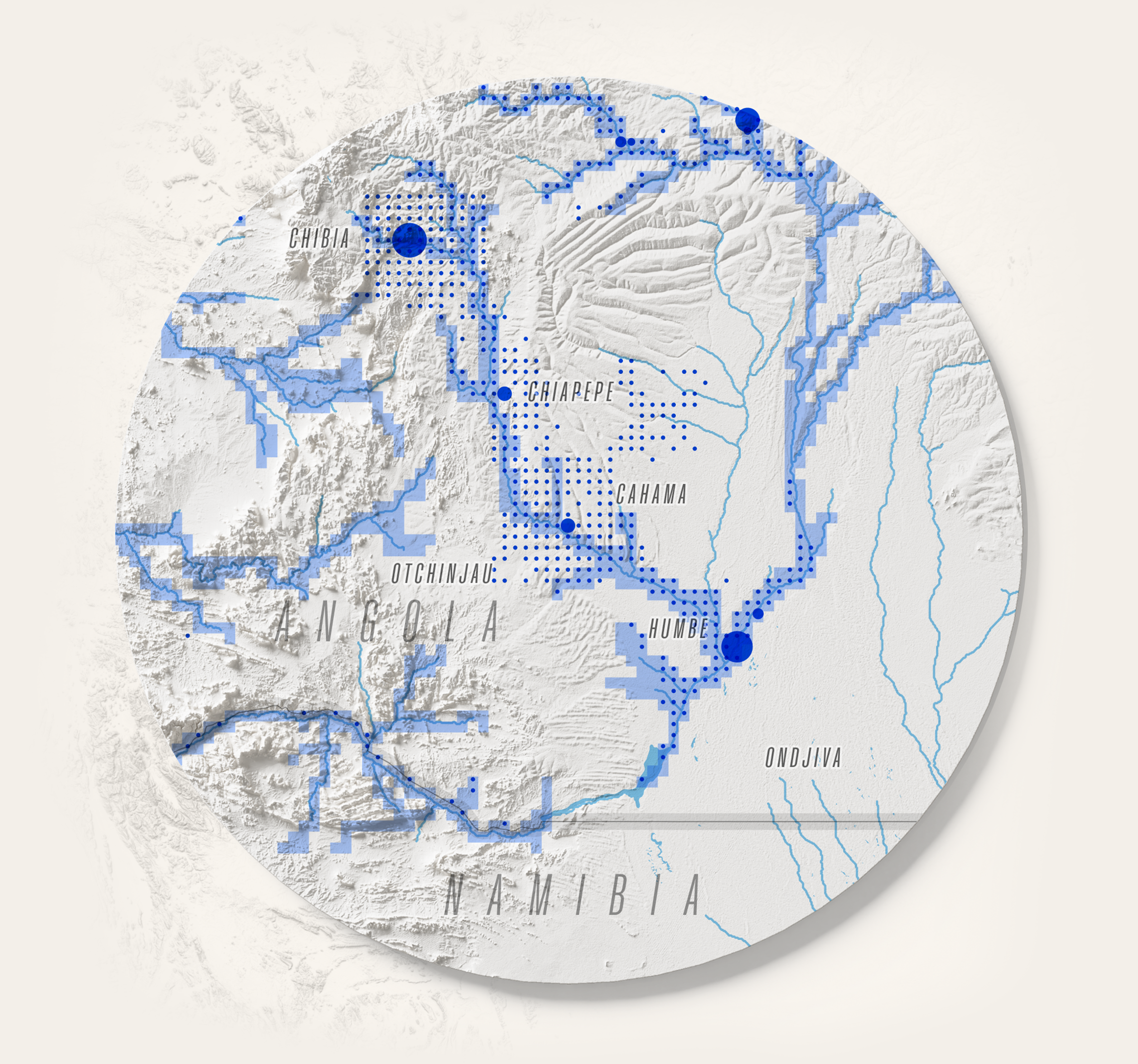
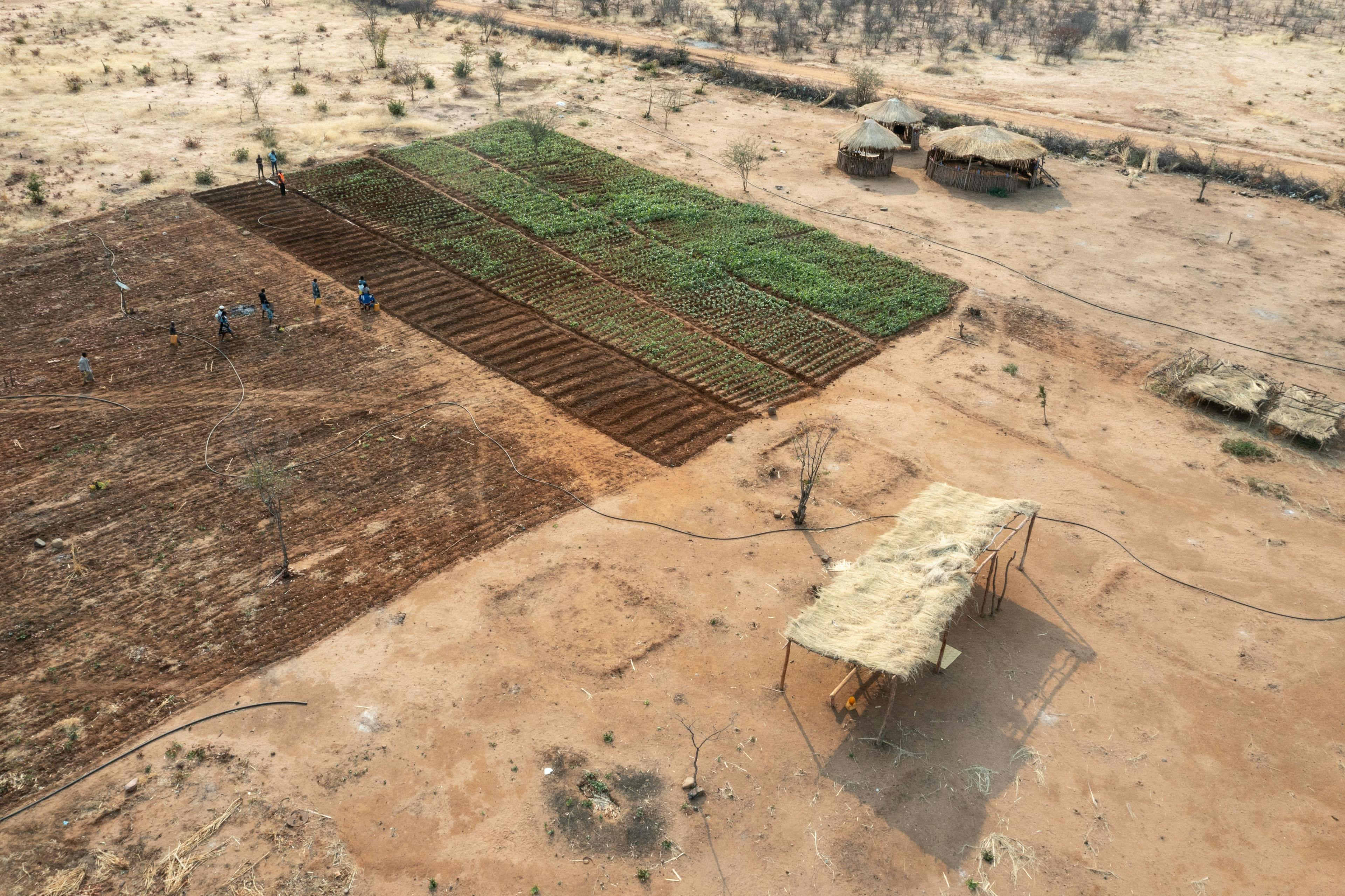
Escola da Salvação Agricultural Farm, Cahama Outskirts
New croplands at the training farm show the first signs of life. Many African livelihoods depend on healthy ecosystems, including for soil fertility, grazing, and water. Choosing a nature-positive development path can sustain farming outputs.
Changes in available water and soil fertility drive farmers to move
Africa’s rain-dependent farming is highly sensitive to climate impacts. Climate disruptions in this sector will make some areas less productive and livable. Consequently, areas where water availability is forecast to improve, at least for the near term, may draw people as conditions remain suitable for farming and raising livestock.
The Africa Climate Mobility Model projections suggest that more people will leave rain-fed farming areas as water becomes scarce and harmful climate events lower crop yields. Irrigated areas will likely attract people, but these regions are a comparatively small part of the continent.
Figure 1
The future is particularly uncertain in highland rainfed agricultural areas, where increases in internal climate mobility trends may slow for both scenarios, and even reverse by 2030 under High Road scenario.
Internal climate migrants per scenario in agricultural lands in Africa
High Road scenario
Rocky Road scenario
Source: ACMI Africa Climate Mobility Model, 2022
Smallholder farmers already use mobility to cope with unforeseen weather events
Smallholders tend to move for a season for off-farm work if yields are low or they suffer crop losses. Decreased rainfall in rural areas in sub-Saharan Africa has been linked to an increase in the number of people moving towards urban areas.

Central Cahama, Angola
Cattle wander across the main road. Farming is Africa’s cultural and economic lifeblood. Climate impacts, especially to rain-fed farming, will propel more people to leave rural areas and fuel the growth of smaller towns and cities.
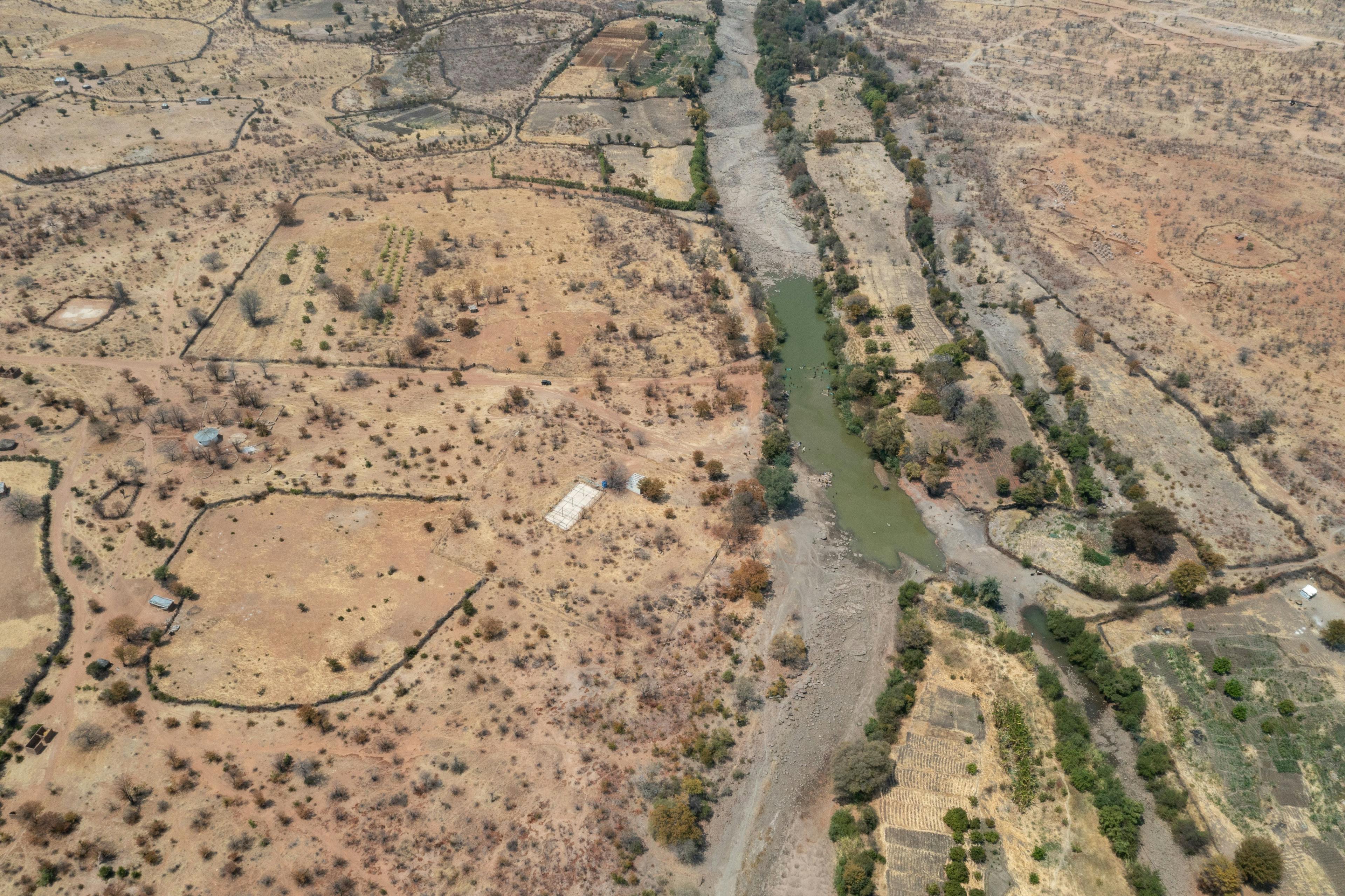
Caculuvar River
Farmlands along the dwindling river are bare after the rainy season has passed and the dry months grip the region. Smallholder farmers often look for off-farm work to boost their income when rains are poor and crop yields down.

Caculuvar River
People take to the river to wash their clothing and cool off. Climate change will make some parts of Africa better suited to farming and will draw people to areas where, at least in the near term, water availability improves.

Cahama Outskirts
Cattle quench their thirst at a watering hole. To support Africa’s growing population on a climate resilient development pathway, the continent must use natural resources like land and water efficiently and sustainably.
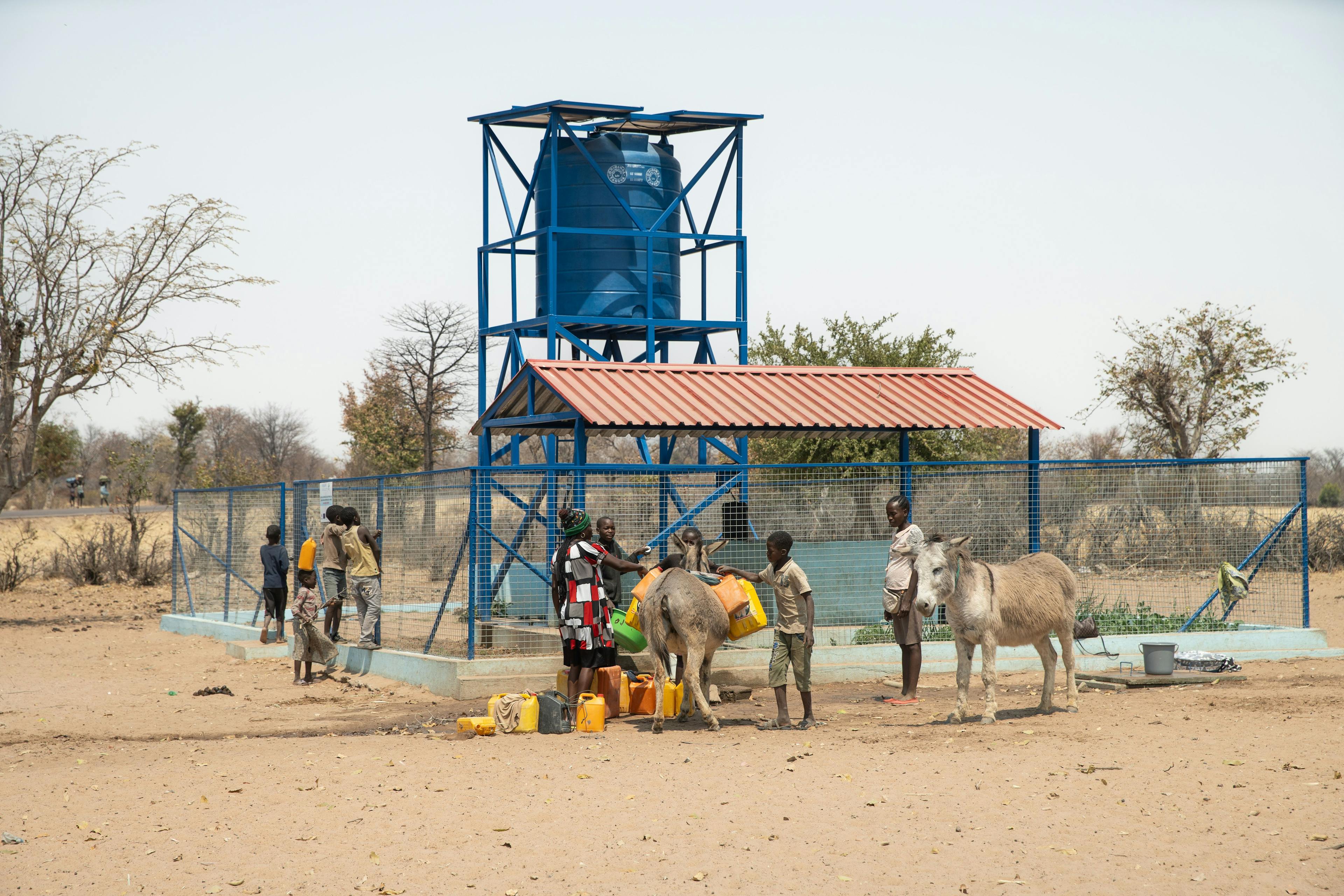
Cahama Outskirts
People collect drinking water from storage tanks near a borehole. Africa will need to find cooperative solutions for land and water management to offset climate stressors, and reduce the risk and the impacts of displacement.
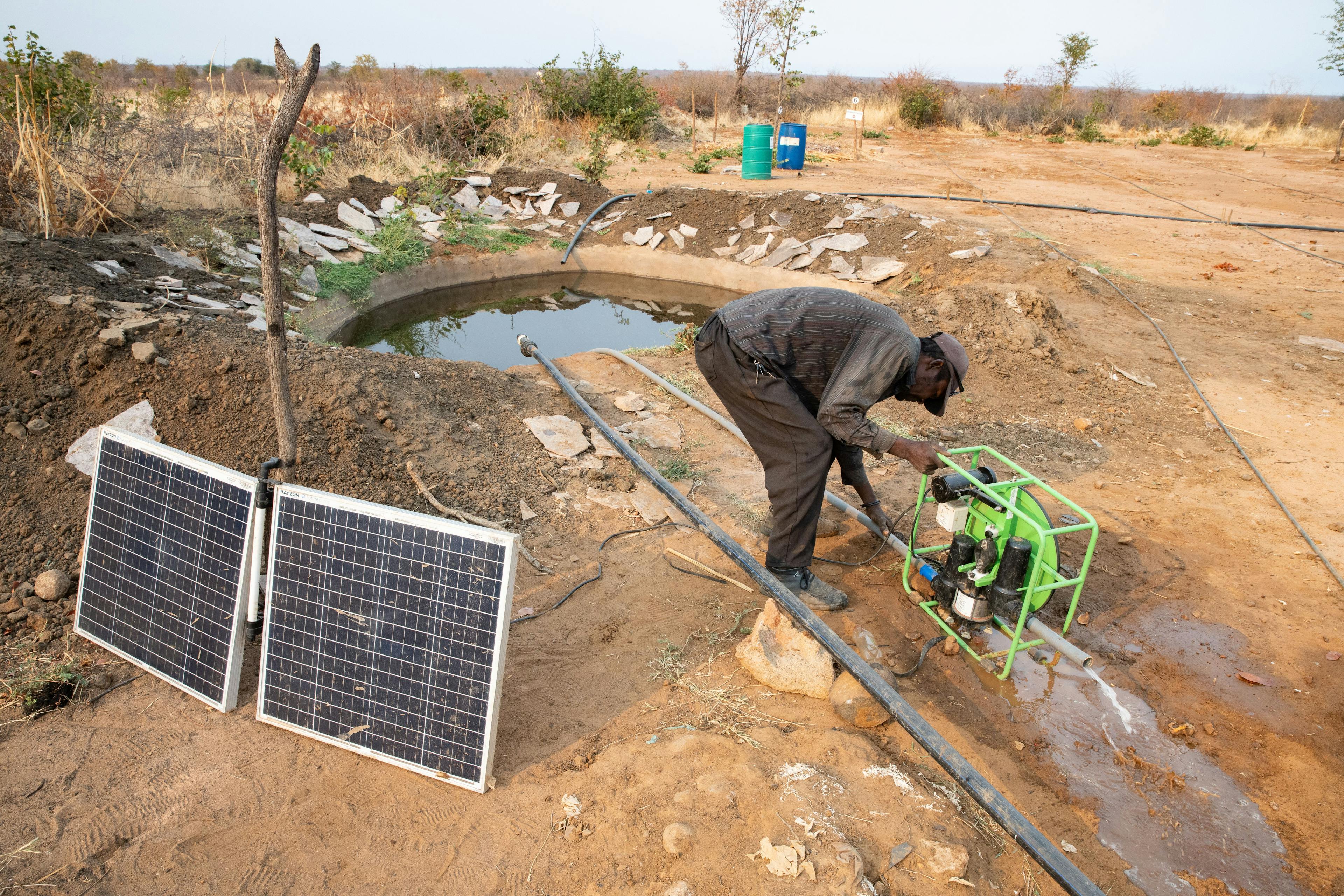
Escola da Salvação Agricultural Farm, Cahama Outskirts
A man starts a solar-powered water pump at a borehole at this training facility. The water is used exclusively to irrigate crops in the nearby fields. Water availability is one of the biggest challenges to ongoing farming success.
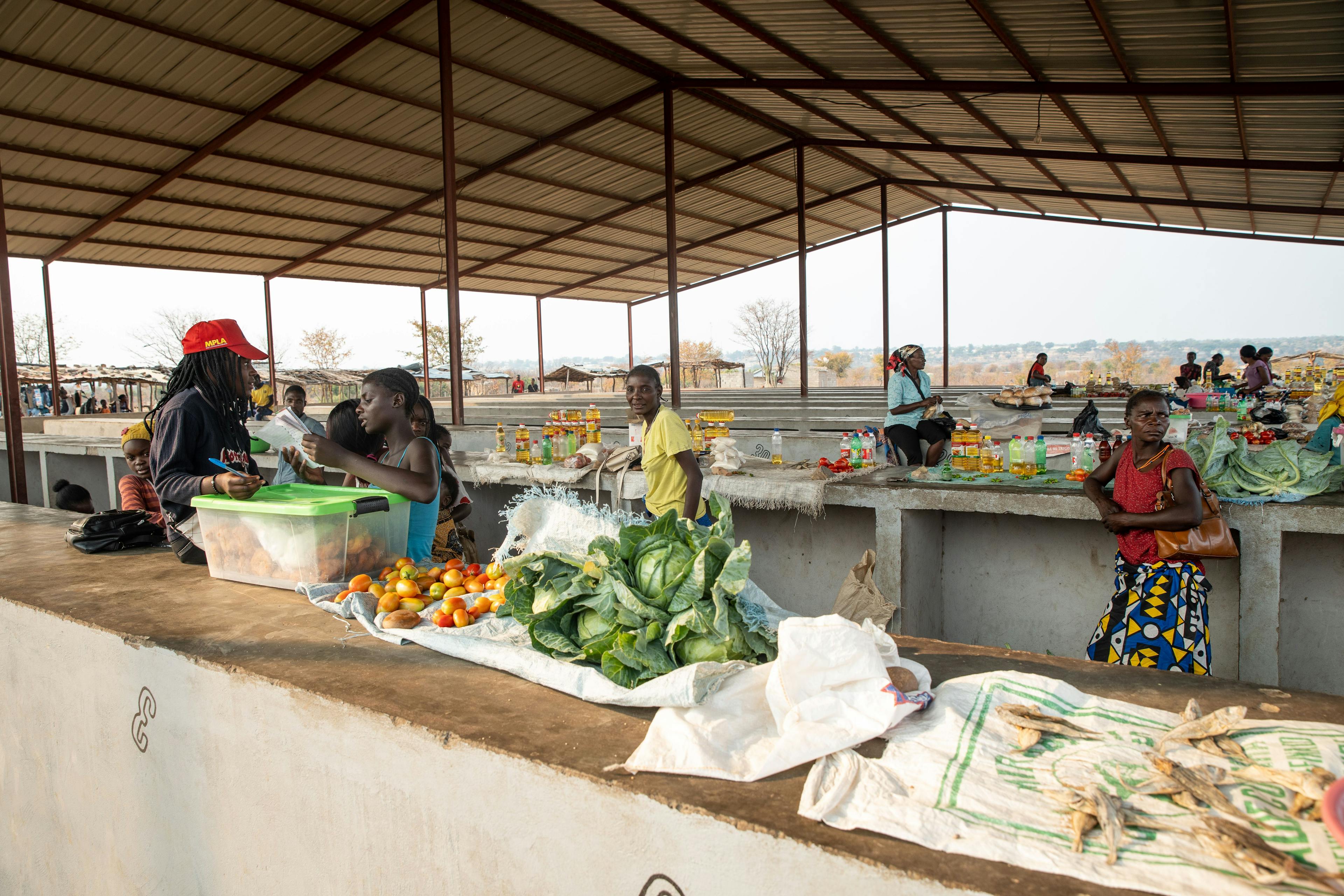
Ompupa Food Market, Cahama
Traders at this open-air market sell fresh produce and pastries. Increasing crop yields due to improved climatic conditions in some areas are linked with an uptick in cross-border mobility, as people have the means to move over longer distances.

Central Cahama
Young men come together after work at a soccer field in the heart of town. Anticipating and planning for population shifts will help towns and cities welcome new arrivals and build social cohesion as communities change.
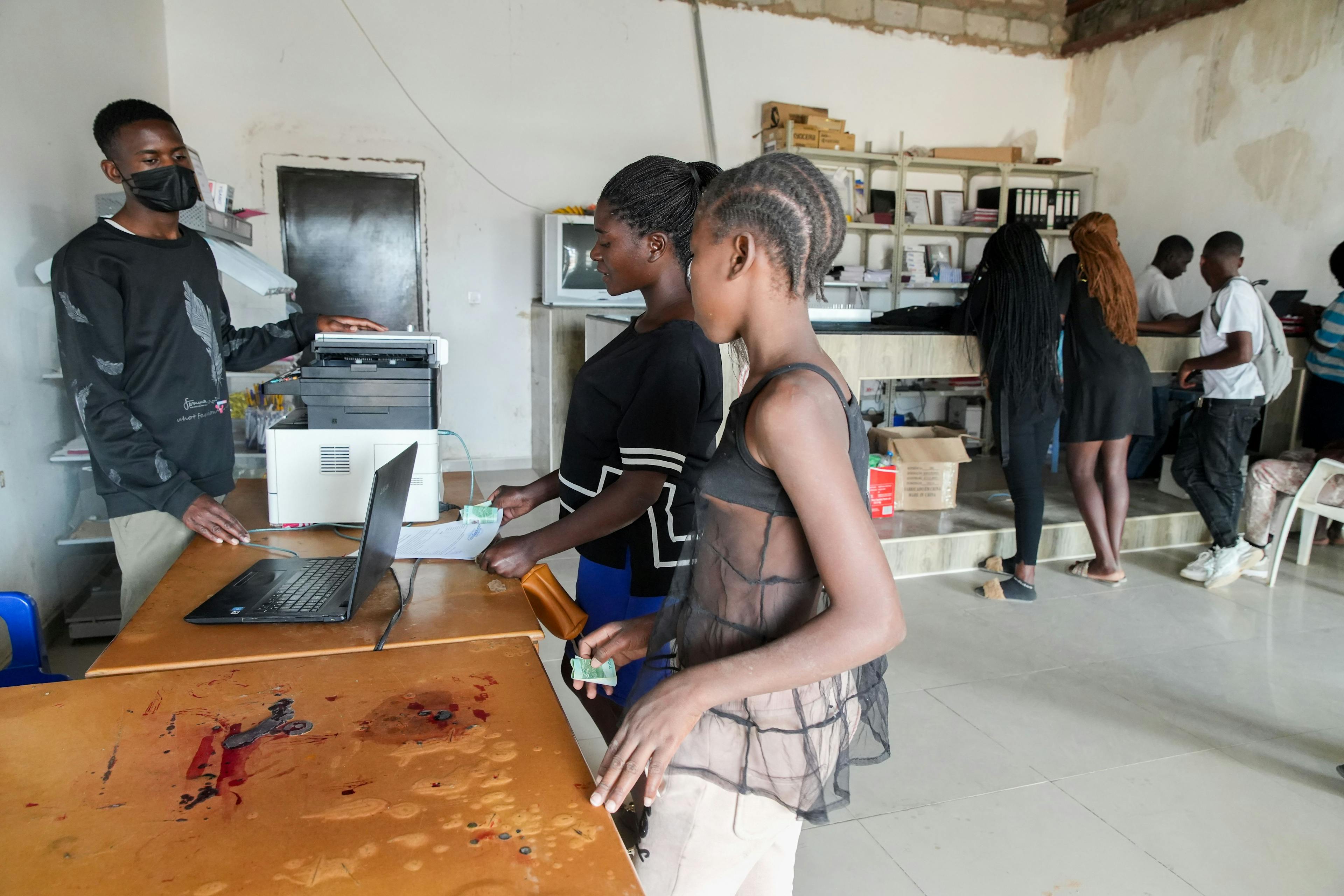
PS Shyiova Copy Shop, Central Cahama
Customers come here to print or copy official documents and photos. Moving to a nearby town can be a first step in a longer migration journey. Young Africans may dream of far-off opportunities, but many lack the means to pursue them.
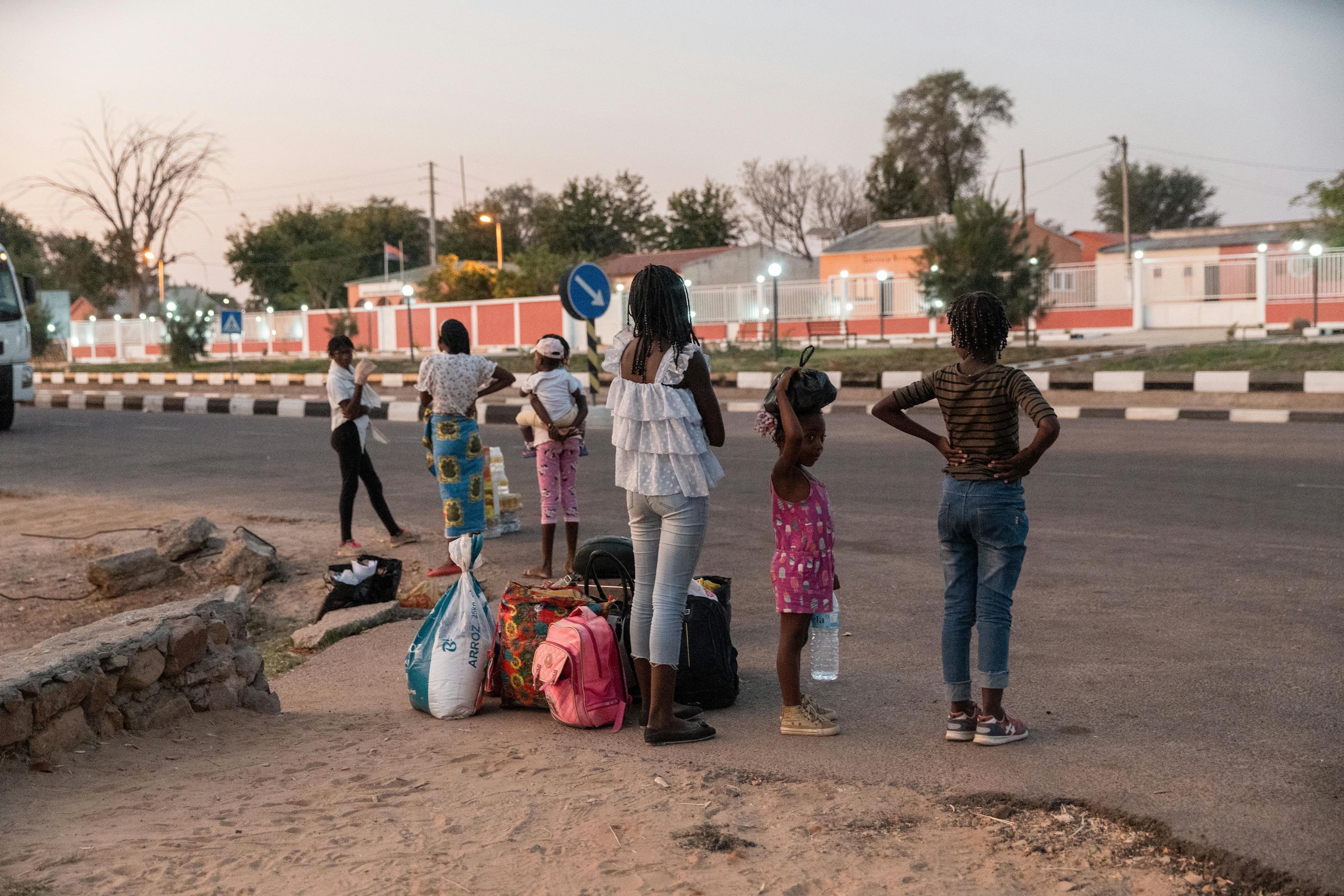
Cahama Roadside
Local traders en route from Xangongo to Lubango after stocking up on a shopping trip. Women are often poorer than men and more negatively impacted by climate shocks and stressors, but also resourceful in drawing on social capital or self-employment during tough times.
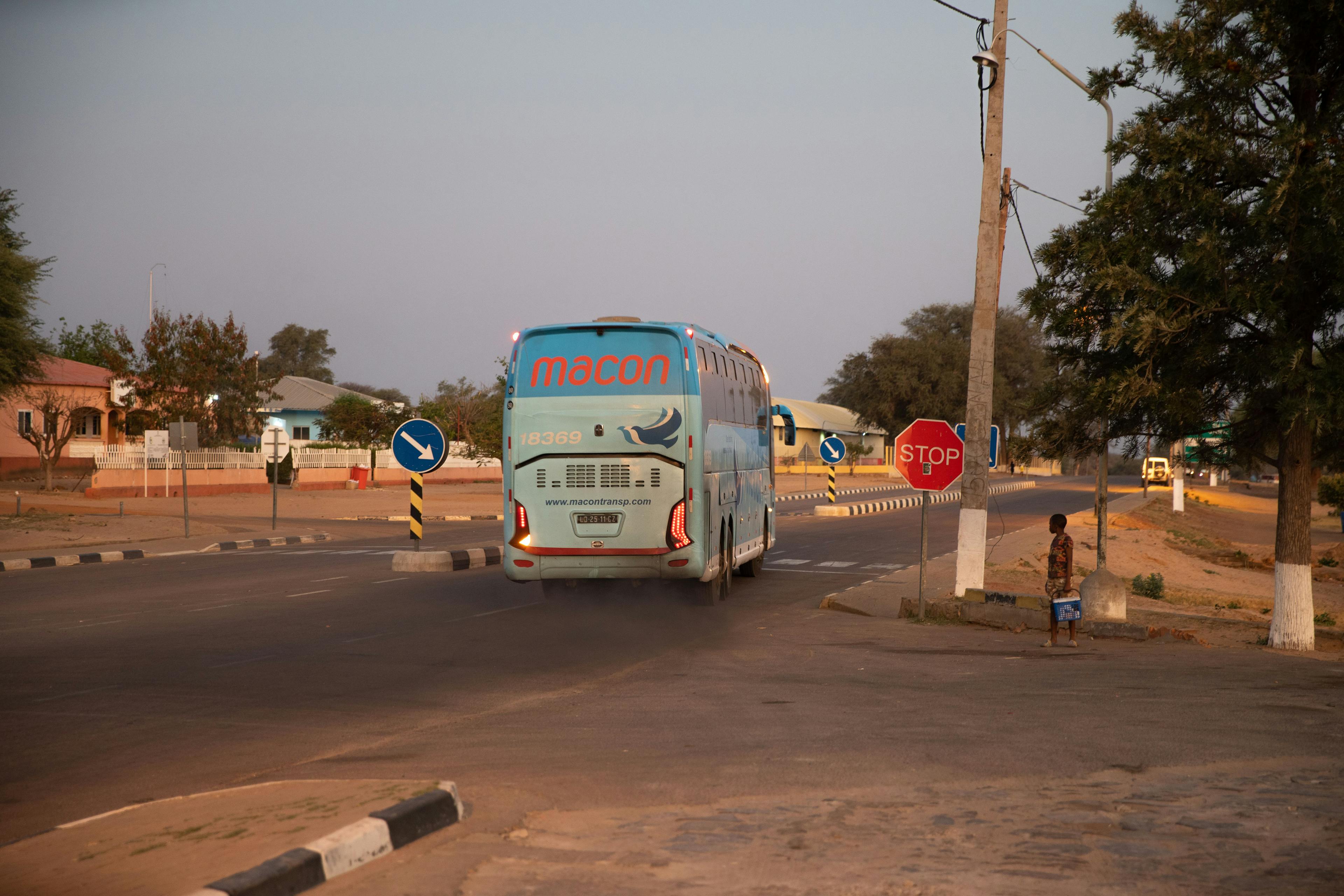
Cahama
An evening bus pulls away from a gas station. Small cities and towns will be primary destinations for climate mobility. With the right connecting infrastructure and services, stronger rural-urban ties can help local economies flourish.
Southern Africa: Crop yields will increase cross-border migration
While water availability is a strong predictor for people’s movement within their countries, crop yields appear to have a more significant impact on cross-border movements across the continent. The Southern African Development Community (SADC) region will see the biggest increase in cross-border migration in response to climate impacts. By 2050, up to 800,000 people could be moving between neighbouring countries in the region. This movement is largely in response to climate-related growth in crop production in countries such as Zimbabwe, where increased yields could give people the resources they need to migrate over longer distances. South Africa and Mozambique are projected to be receiving countries for climate mobility.
Figure 2
While some agricultural areas - particularly rainfed lowlands - could see people leave due to climate impacts, inward mobility is predicted in areas around the Nile river and the Ethiopian highlands.
Internal climate mobility by 2050 in the Rocky Road scenario in agricultural lands
People leavingPeople arriving
1M+
100k
10k
1k
100
0
100
1k
10k
100k
1M+

Source: ACMI Africa Climate Mobility Model, 2022
West Africa: Less cross-border movements, as climate impacts hit water and agricultural yields
In the Sahelian region, Mali, Burkina Faso, and Niger are forecast to experience a drop in crop yields, which could decrease people’s income and thus their ability to migrate across borders. As a result, the region could see up to 200,000 fewer migrants moving between countries by 2050.

A water seller crosses the drying river on his way to town. Water resources must be managed efficiently and sustainably using locally-tailored solutions to support the continent’s growing population.
The Way Forward
Land and water governance will be critical for shaping climate mobility dynamics in Africa.
Land and water underpin agriculture and food production on the continent, as well as the ecosystem services that communities across Africa rely on. Africa’s development in the coming decades will depend on finding ways to use these natural resources more efficiently and sustainably to support the continent’s growing population. Shared resources, such as river basins, expose communities and countries to transboundary climate risks, but also create the potential for common benefits. Climate mobility alters the landscape of connections between people and places and will create increasingly strong rural-urban ties. Through joint planning and stewardship of shared resources, such connections can be harnessed for greater collective resilience.
